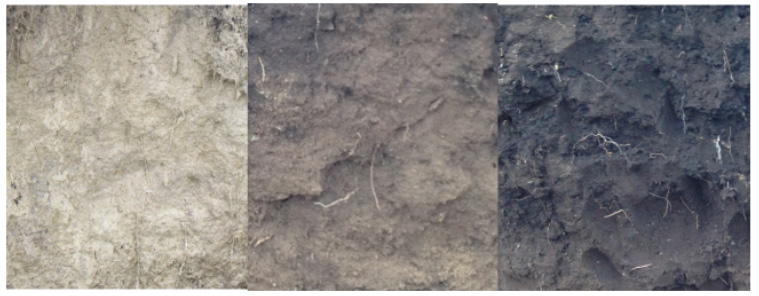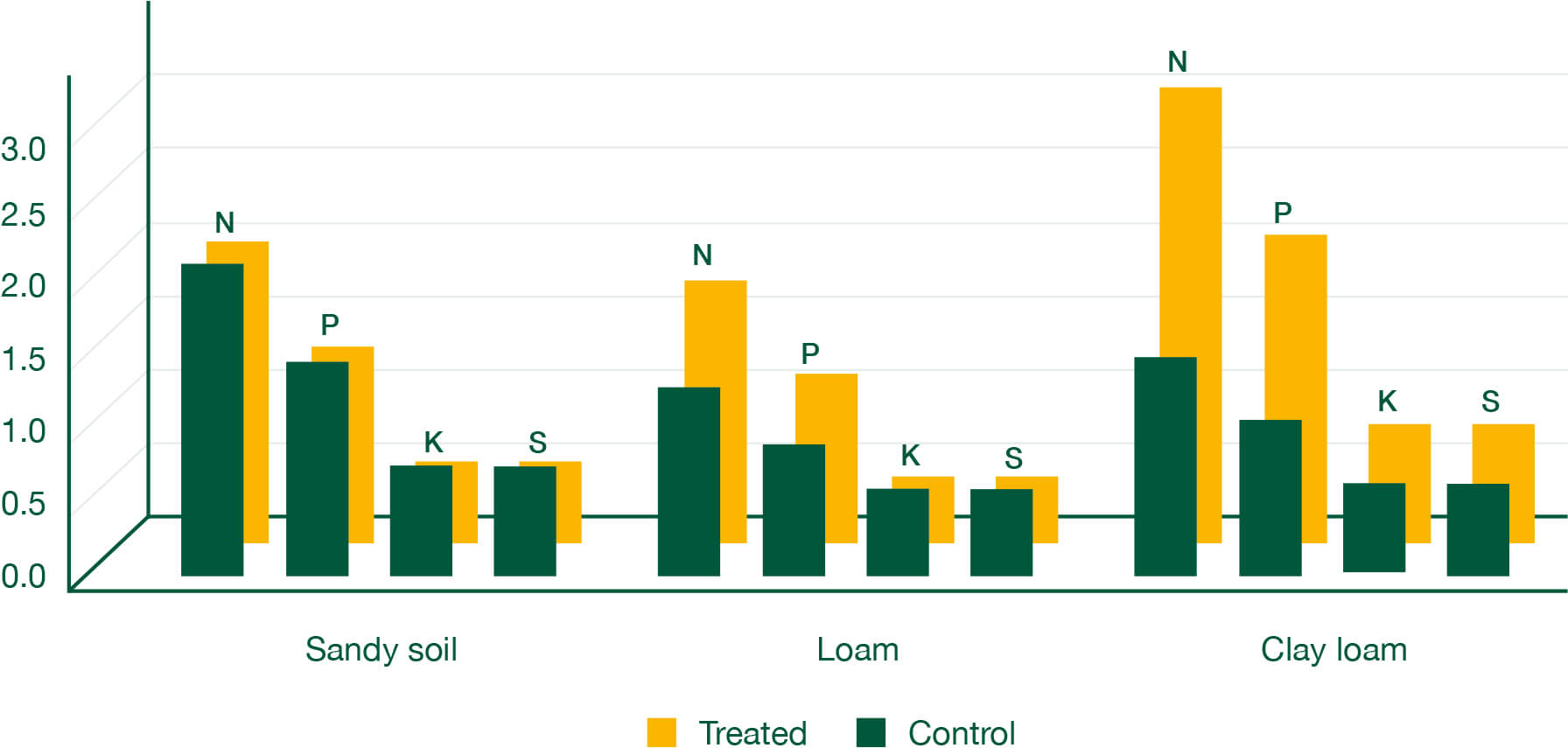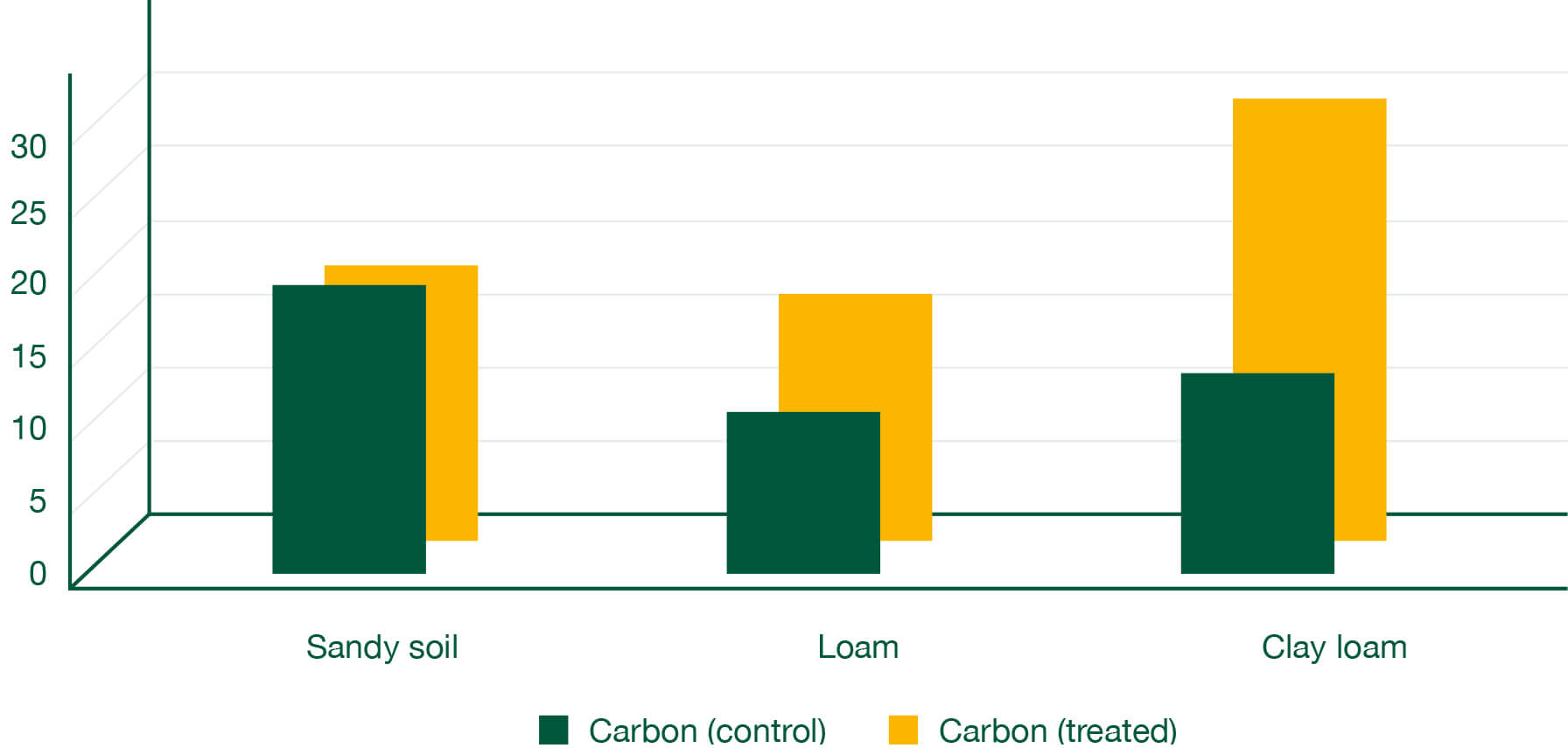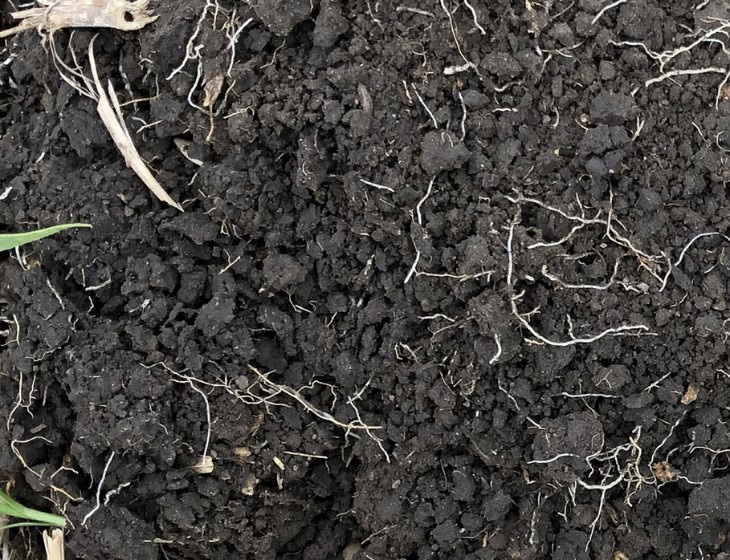
Agronomy
Topic
The importance of soil carbon
Carbon is the main element present in soil organic matter, on average making up 58% by weight.[I] The carbon present in soil organic matter is referred to as organic carbon. Soil organic carbon is a vital component of productive agriculture. In addition sequestration of carbon in agricultural soils has been recognised as a tool to mitigate climate change.
Organic carbon influences many soil characteristics including nutrient and water holding capacity, nutrient cycling and stability, improved water infiltration and aeration. Soils can preserve organic carbon, as the main component of organic matter, by forming soil aggregates and mineral-organic complexes. Clay particles are more effective than sand and silt in preserving soil organic matter.[ii]
Soil carbon is a food source for soil micro-organisms and an important bacteria metabolite, where microbial activity plays an important role in improving soil structure. Soil microflora form microaggregates in the soil by binding soil particles together with their secretions. These microaggregates are like the building blocks for improving soil structure. Improved soil structure increases water infiltration and increases water holding capacity of the soil.[iii] Many bacteria produce a layer of polysaccharides or glycoproteins that coat the surface of soil particles. These substances play an important role in cementing sand, silt and clay soil particles into stable microaggregates that improve soil structure.[iv]
Building soil carbon also requires nutrients to be present in the soil. The transformation of organic residues into humus (the accumulation of organic carbon) by soil organisms requires nitrogen, phosphorus and sulphur and other elements in smaller quantities.
High levels of organic carbon help to maintain agricultural production through its positive role in maintaining soil health, raising fertility, reducing erosion and encouraging soil biota. Higher soil organic matter levels cause greater soil nitrogen retention, greater microbial biodiversity, and promote the presence and growth of arbuscular mycorrhizal fungi that colonise the roots of crops and facilitate the movement of plant nutrients from the soil into plants improving growth and yields.[v]

Soil carbon levels increase when carbon-based inputs are greater than the losses. The main losses of carbon from the soil are through organic matter decomposition, soil erosion, biomass burning.[vi]
Appropriate crop residue management is important for maintaining or increasing soil carbon levels in cultivated soils, especially when organic carbon is not provided from external sources e.g. manure.
The greater the amount of crop residue (straw, stubble and roots) that can be returned to the soil, the better. Recycling as much as possible of the residues from all kinds of harvested crops (trees, cereals, grazed pastures, orchards and vineyards) is beneficial for maintaining or increasing soil carbon.[vii]
Productive perennial pastures incorporating grass species with extensive root zones are known to improve soil carbon levels.[viii] Dry matter from pastures will decay in the soil and when pasture is grazed or harvested, for hay or silage, plants will shed roots which will decay into organic carbon. A pasture phase in any crop rotation is an efficient way to build soil carbon.[ix]

Examples of soil with less than 1%, 2% and 3% organic matter from left to right, respectively. Photo: Jodi DiJong-Hughes
BioAg has a range of biostimulants, with high organic carbon content, which have been developed as a food source for plants and beneficial soil micro-organisms and to increase soil carbon levels.
BioAg Soil & Seed® is formulated to improve soil microbial activity. It acts as an excellent soil inoculant, feeds and expands the volume and diversity of beneficial soil micro-organisms as a catalyst to improve plant availability of both soil borne and applied nutrients. Treated soils demonstrate improved structure, water infiltration, tilth and field capacity, along with natural plant pathogen suppression.
Independent trials in a wide variety of crops attest to its efficacy in improving yield and quality.
Creative Innovation Agriculture & Forestry (CIAAF) studied The effect of BioAg’s Soil & Seed on a range of soil samples including sandy soil, loam, clay loam’, to ascertain Soil & Seeds’ effect on:
- microbial population in soils (microbial biomass)
- soil nutrients within the microbial population
- soil carbon levels
Using protein clipping, biochemical analysis and DNA analysis, CIAAF determined the changes in the microbial biomass (fungi and bacteria) in each sample, the results were a significant increase in microbial levels:
- Average total fungi increase +82%
- Average total bacteria increase +58%
- On average, the total number of microorganisms (bacteria and fungi) increased by 77% above the control.
In addition, there were nutrient increases within the soil biomass and in the levels of carbon in soils.
Nutrient increases in biomass across soil types (T/ha)

Increases in soil carbon across soil types (T/ha)

Humus (organic carbon molecules formed from the breakdown of organic residues) plays an important role in the rehabilitation of soils Increasing soil CEC, improving tilth and porosity, water availability and retention. Humic compounds play a vital role in soil aggregation, make clay more porous, soft, and aerobic, with better drainage, resulting in deeper root growth of all plants. Humic substances are stable, long-lasting biomolecules.[x]
BioAg HydraHume® (potassium humate) directly contributes to humus development. It is an efficient promoter of plant growth and increased root mass, while also improving the effects of fertilisers. HydraHume rapidly accelerates the microbial activity in soils, developing soil carbon and reducing nutrient lock up. HydraHume is derived from Leonardite, one of the richest sources of humic acid available.
BioAg’s team of area managers develop programs and provide advice for farmers across the range of farming approaches. We work with farmers who practice what you might call conventional farming’ and have an interest in regenerating the soil. We also work with farmers who have committed to natural fertilisers and a strong focus on regenerative agriculture.

A well-aggregated soil provides many micro-habitats for soil microbes. Photo: Caley Gasch.

Recent Comments